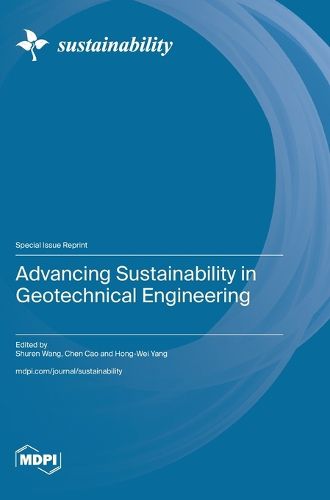Readings Newsletter
Become a Readings Member to make your shopping experience even easier.
Sign in or sign up for free!
You’re not far away from qualifying for FREE standard shipping within Australia
You’ve qualified for FREE standard shipping within Australia
The cart is loading…






This title is printed to order. This book may have been self-published. If so, we cannot guarantee the quality of the content. In the main most books will have gone through the editing process however some may not. We therefore suggest that you be aware of this before ordering this book. If in doubt check either the author or publisher’s details as we are unable to accept any returns unless they are faulty. Please contact us if you have any questions.
Geotechnical engineering is a key element linking engineering construction with the earth, including foundation engineering, slope engineering, tunnel engineering, mining engineering, etc. To promote the sustainable development of geotechnical engineering, it is necessary to fully utilize the bearing capacity of rock and soil mass; reduce the amount of building materials with high carbon emissions, such as concrete and reinforcement; and minimize the workload. To achieve engineering construction objectives, it has become a hot topic of global concern to modify rock and soil mass; improve the anti-floating, anti-flood, and anti-seismic capabilities of geotechnical engineering; and avoid polluting, damaging, and influencing the ecological environment around geotechnical engineering sites.
The aim of 'Advancing Sustainability in Geotechnical Engineering' was to require geotechnical engineers to actively respond to various natural disasters, implement energy conservation and emission reduction, and achieve friendly, coordinated and sustainable development of geotechnical engineering and the ecological environment during the investigation, design, and construction processes. In addition, in this Special Issue, we hope to showcase original and innovative research papers highlighting the most challenging new methods, materials, equipment, and techniques relevant to promoting sustainable development in geotechnical engineering.
$9.00 standard shipping within Australia
FREE standard shipping within Australia for orders over $100.00
Express & International shipping calculated at checkout
This title is printed to order. This book may have been self-published. If so, we cannot guarantee the quality of the content. In the main most books will have gone through the editing process however some may not. We therefore suggest that you be aware of this before ordering this book. If in doubt check either the author or publisher’s details as we are unable to accept any returns unless they are faulty. Please contact us if you have any questions.
Geotechnical engineering is a key element linking engineering construction with the earth, including foundation engineering, slope engineering, tunnel engineering, mining engineering, etc. To promote the sustainable development of geotechnical engineering, it is necessary to fully utilize the bearing capacity of rock and soil mass; reduce the amount of building materials with high carbon emissions, such as concrete and reinforcement; and minimize the workload. To achieve engineering construction objectives, it has become a hot topic of global concern to modify rock and soil mass; improve the anti-floating, anti-flood, and anti-seismic capabilities of geotechnical engineering; and avoid polluting, damaging, and influencing the ecological environment around geotechnical engineering sites.
The aim of 'Advancing Sustainability in Geotechnical Engineering' was to require geotechnical engineers to actively respond to various natural disasters, implement energy conservation and emission reduction, and achieve friendly, coordinated and sustainable development of geotechnical engineering and the ecological environment during the investigation, design, and construction processes. In addition, in this Special Issue, we hope to showcase original and innovative research papers highlighting the most challenging new methods, materials, equipment, and techniques relevant to promoting sustainable development in geotechnical engineering.